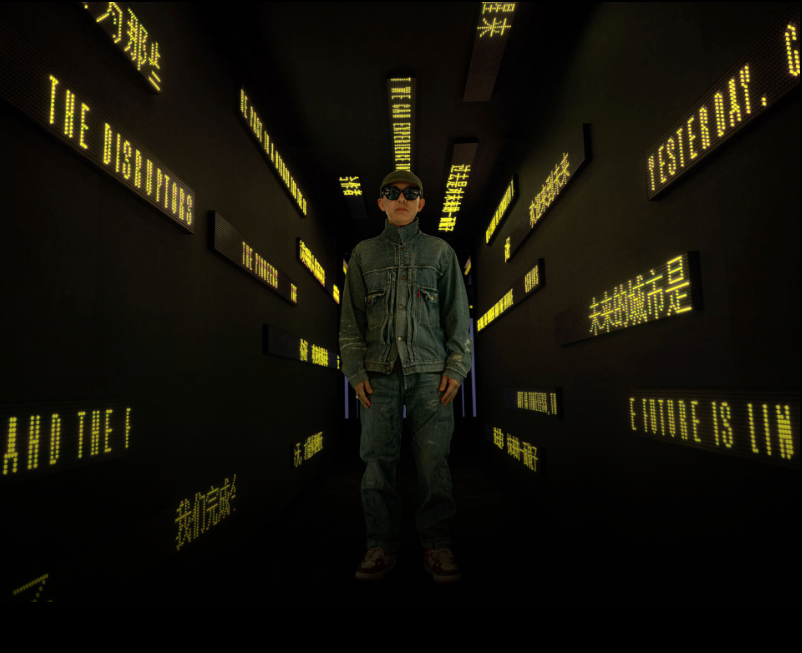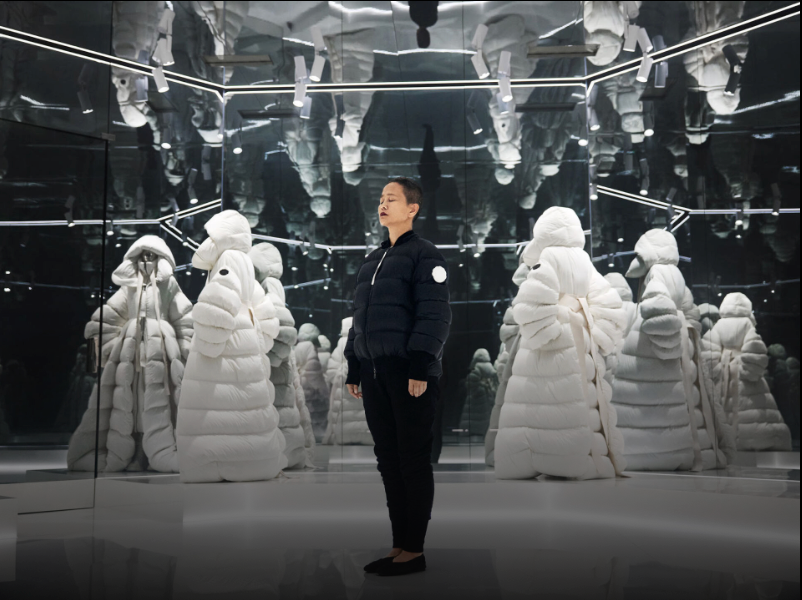Moncler's 'City of Genius' in Shanghai: How Limitless Creativity Redefines the Future of Luxury Marketing
Moncler’s 'City of Genius' was undoubtedly the standout event at last week’s Shanghai Fashion Week. More than just a fashion show, the brand created an entire world right next to the Huangpu River, blending fashion, art, design and music into a multi-dimensional experience.
The event explored the theme of genius, posed as a question across social media: “What is Genius?” And the answer was manifested in a collaboration with 10 guest designers, including Rick Owens, Jil Sander, Willow Smith and A$AP Rocky. The scale was impressive, with over 8,000 guests attending in person and 57 million viewers online. The creative showcase extended beyond the global to the local, with Moncler partnering with famous Chinese artist Xu Bing, whose calligraphy work set the tone at the entrance. This mix of international influence and local engagement is exactly the kind of innovation luxury brands need to adopt, especially when operating in competitive markets like China.
Why Shanghai Matters
Moncler’s decision to host such a high-impact event in Shanghai is strategic. Despite a tough economic climate for luxury goods, China remains a key market. Asia accounts for nearly 50% of Moncler’s sales, and revenue was 11% up in China in H1 2024. Moncler outperformed competitors by continuing to innovate and engage with the local market. These figures speak to the continuing importance of China for global luxury brands.
Shanghai’s status as a global fashion and innovation hub is no accident. For luxury brands, the city represents a unique intersection of creativity, commerce, and technology. Over the past decade, it has firmly established itself as a critical player in the luxury industry. The city’s fast-paced lifestyle, cosmopolitan population, and deep appreciation for both heritage and innovation make it a natural fit for luxury brands seeking to push boundaries. Moncler successfully created an experience that resonated with consumers who are increasingly sophisticated and selective.
The Continued Importance of China for Luxury Brands
While some brands may be facing challenges in China, the opportunity here is still enormous. Daniel Zipser, Senior Partner at McKinsey, has noted that Chinese consumers’ overseas luxury spending is gradually returning to pre-pandemic levels. This recovery in spending, coupled with the fact that China’s domestic luxury market is becoming more competitive, means that brands need to rethink their strategies. It’s no longer enough to rely on the traditional retail model. Instead, brands must innovate to capture consumer attention in both physical and digital spaces.
Moncler’s 'City of Genius' shows that one of the most effective ways to do this is through highly curated, immersive events. The fusion of global and local elements in Moncler’s showcase highlights an important shift: luxury brands can no longer afford to treat China as a homogeneous market. Consumers here value cultural nuance, authenticity, and creativity, and they expect brands to deliver more than just products.
Lessons for Other Brands
There are clear takeaways from Moncler’s approach:
- Create Immersive Experiences: Moncler created a powerful brand experience by combining fashion, art and music into an immersive event. Consumers today are looking for experiences that engage them on multiple levels: visually, emotionally, and digitally. Moncler understood this and designed an event that was part art installation, part fashion showcase, and part cultural event.
- Leverage Digital Reach: Moncler's ability to draw in 57 million online viewers highlights the importance of digital amplification. In China, social media platforms like WeChat, Weibo, and RED (Xiaohongshu) are crucial for building brand awareness and community engagement. Mastering these platforms and leveraging user-generated content can significantly extend the reach of physical events.
- Global and Local Collaboration: The collaboration with Chinese artists like Xu Bing shows how to strike a balance between international and local partners. Brands that understand and incorporate Chinese culture authentically into their campaigns will resonate more deeply with consumers.
Innovating in Times of Change
While China’s luxury market may currently be facing challenges, Moncler’s success in Shanghai proves that the key to thriving in uncertain times is innovation and boldness. Brands that adapt quickly, especially those willing to think beyond the traditional ways of operation, will be the ones leading the way when the market cycle rebounds.
For Moncler, this event was not just a marketing strategy but a reaffirmation of its commitment to innovation and creativity. As other brands take note, the future of luxury in China will depend on how well they can learn from these bold examples and continue to push boundaries.
At Think East, we keep you updated on innovative brand strategies like this one and how they’re reshaping the luxury market in China. We also help you create and tailor your own brand strategy to navigate the unique landscape of China’s market, ensuring your brand connects with local audiences and drives long-term success.
Stay tuned for our next post, and connect with us on LinkedIn or via email—we’d love to hear your thoughts and questions.
See you next time!
Banner image and all gallery images: Courtesy of Moncler.















